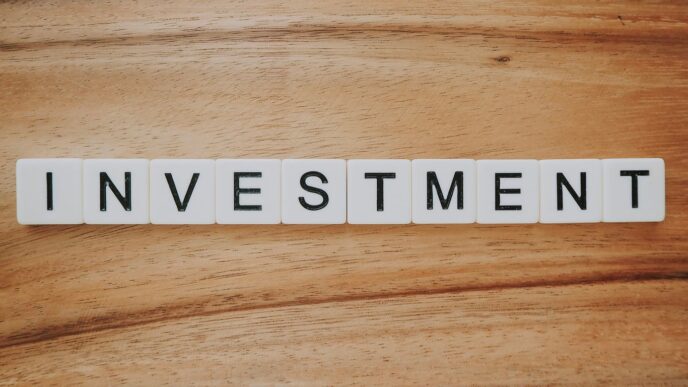Starting a business is a wild ride filled with ups and downs. While we often hear about the success stories, the truth is that failure is a big part of the journey. For many entrepreneurs, facing setbacks is almost guaranteed. The real challenge lies in how we respond to those failures. Instead of letting them define us, we can learn from them and grow. This article explores the concept of failing as an entrepreneur and how embracing setbacks can lead to future success.
Key Takeaways
- Failure is a common part of the entrepreneurial journey; learning from it is crucial.
- Adopting a growth mindset helps entrepreneurs see setbacks as opportunities for improvement.
- Building resilience through challenges can lead to greater success in future endeavors.
The Inevitability of Failure in Entrepreneurship
As we talked about before, "failing forward" is super important for anyone starting a business because, let’s face it, screw-ups and total flops are just part of the deal. But how often do these things really happen?
According to some reports, a lot of startups fail within their first year, and only about half make it past five years. That might sound scary, but don’t let it stop you! It just shows how important it is to keep going and be able to change when things get tough. Think about some of the biggest companies out there. Apple, Starbucks, even FedEx had some major problems early on. The first Macintosh wasn’t a hit, Starbucks almost went broke in the late 80s, and the guy who started FedEx had to get a loan from his dad at the last minute just to keep the company alive. They didn’t avoid failure; they learned from their mistakes and changed their plans. That’s what "failing forward" is all about.
Understanding the Statistics of Failure
Okay, so let’s get real about the numbers. It’s not all sunshine and rainbows in the entrepreneur world. Here’s a quick rundown:
- High Failure Rates: A bunch of new businesses don’t even make it past the first year. It’s a tough world out there. Knowing this can help you prepare for the journey to success.
- 5-Year Survival: Only about half of businesses are still around after five years. That means you’ve got to be in it for the long haul.
- Market Volatility: The market changes all the time. What works today might not work tomorrow. You’ve got to stay on your toes.
These numbers aren’t meant to scare you, but to give you a realistic view. It’s like knowing the weather forecast before you go on a hike. You can pack the right gear and be ready for anything.
Learning from the Experiences of Others
One of the best ways to get better is to look at what other people have done, both the good and the bad. Here’s the deal:
- Read Biographies: Find out how successful people dealt with setbacks. You’ll see that even the best were fired or had major issues.
- Case Studies: Look at companies that failed and figure out why. What mistakes did they make? What could they have done differently?
- Talk to Other Entrepreneurs: Network and chat with people who have been there, done that. They can give you real-world advice and help you avoid common traps. It’s important to be resilient.
Learning from others can save you a lot of time and heartache. It’s like having a cheat sheet for the game of entrepreneurship.
Cultivating a Failing Forward Mindset

It’s easy to get discouraged when things don’t go as planned, especially when you’re pouring your heart and soul into a business. But what if we could change our perspective? What if we could see failures not as dead ends, but as detours on the road to success? That’s where cultivating a "failing forward" mindset comes in. It’s about learning to embrace setbacks, extract lessons, and keep moving. It’s not about celebrating failure, but about recognizing its potential to make us stronger and smarter. It’s a game changer.
Embracing a Growth Mindset
A big part of failing forward is having a growth mindset. This means believing that your abilities and intelligence aren’t fixed, but can be developed through effort and learning. People with a growth mindset see challenges as opportunities to grow, not as threats to their ego. They don’t shy away from difficult tasks; they embrace them. Here’s how to develop a growth mindset:
- Challenge yourself: Step outside your comfort zone. Take on projects that seem a little too big or too complex. This is where the real learning happens.
- Focus on the process: Don’t just obsess over the outcome. Pay attention to what you’re learning along the way. The journey is just as important as the destination. Set business goals that are achievable.
- Seek mentorship: Find people who have been there, done that. Learn from their experiences, both good and bad. Mentors can provide guidance, support, and a fresh perspective.
Learning from Mistakes
Okay, so you messed up. It happens. The key is to not just brush it off and move on, but to really dig in and figure out what went wrong. This requires honest self-reflection and a willingness to admit your mistakes. Ask yourself:
- What were the key factors? What specific actions or decisions led to the failure? Be honest with yourself.
- Could I have done anything differently? What could you have done to prevent the failure? What would you do differently next time?
- What can I learn? What valuable lessons can you extract from this experience? How can you apply these lessons to future situations?
By critically analyzing your mistakes, you can identify areas for improvement and develop strategies to avoid similar pitfalls in the future. It’s like getting a free education, but you have to pay attention to the lecture.
Resilience Builds Character and Success
The entrepreneurial journey is rarely a smooth ride. There will be bumps, potholes, and maybe even a few flat tires along the way. That’s where resilience comes in. It’s the ability to bounce back from adversity, to pick yourself up after you’ve been knocked down, and to keep moving forward despite the challenges. Here are some ways to build resilience:
- Surround yourself with positivity: Connect with people who believe in you and support your dreams. Avoid negative influences that drain your energy and undermine your confidence.
- Maintain a positive attitude: It’s easier said than done, but try to focus on the good things in your life and business. Celebrate small victories and learn from setbacks. Financial prudence is key.
- Focus on the long game: Don’t get too caught up in the day-to-day struggles. Keep your eye on the big picture and remember why you started this journey in the first place.
Transforming Setbacks into Opportunities
Okay, so you’ve stumbled. Maybe you even face-planted. It happens! The real magic isn’t avoiding the fall, it’s what you do after you fall. It’s about seeing those stumbles as stepping stones, not roadblocks. It’s about turning what feels like a disaster into something that actually propels you forward. Easier said than done, I know, but totally possible. Let’s get into it.
Resilience Builds Character and Success
Seriously, resilience is like your entrepreneurial superpower. It’s not just about bouncing back; it’s about bouncing back stronger. Think of it like this: every time you face a setback and keep going, you’re building muscle. Mental muscle, that is. And that muscle is what’s going to help you weather the next storm. It’s about developing the grit to keep pushing, even when things are tough. It’s about understanding that the journey of building a business is just as much about building your character.
Here’s how to build that resilience:
- Focus on the long game: Don’t get bogged down in the day-to-day drama. Keep your eye on the prize. What’s your ultimate vision? Let that guide you. If you are looking for a good investment opportunity, you should check out the CLEVER Coin price forecast.
- Celebrate small wins: Acknowledge your progress, no matter how small. Did you finally land that client? Did you get through a particularly tough week? Celebrate it! It’ll keep you motivated.
- Learn to laugh (at yourself): Seriously, sometimes you just have to laugh. Entrepreneurship is ridiculous. If you can’t find humor in the chaos, you’re going to burn out fast.
The Importance of Flexibility and Adaptability
The business world changes fast. What works today might not work tomorrow. That’s why being flexible and adaptable is so important. You have to be willing to pivot, to change your plans, to try new things. Don’t get too attached to any one idea. Be open to new possibilities.
Here are some ways to cultivate flexibility:
- Stay curious: Always be learning, always be exploring new ideas. Read books, listen to podcasts, attend workshops. The more you know, the more options you’ll have.
- Embrace experimentation: Don’t be afraid to try new things, even if they seem a little crazy. You never know what might work. Think of it as failing forward. Each experiment, whether it succeeds or fails, gives you valuable data.
- Listen to your customers: They’re the ones who are actually using your product or service. Pay attention to their feedback. What do they like? What don’t they like? Use that information to improve your entrepreneurial setbacks and offerings.
When life throws challenges your way, it can feel tough. But remember, every setback can be a chance to grow and learn. Instead of giving up, think about how you can turn these hard times into something positive. Want to discover more ways to change your challenges into opportunities? Visit our website for helpful tips and inspiration!
Wrapping It Up: Learning from Setbacks
In the end, setbacks are just part of the game when you’re an entrepreneur. They can feel heavy, but they also come with lessons that can shape your future. Every stumble can teach you something new, whether it’s about your business, your approach, or even yourself. Remember, the most successful entrepreneurs didn’t just sail through; they faced challenges head-on and learned from them. So, the next time you hit a wall, don’t see it as the end. Instead, look for the lessons hidden within. Embrace those failures, adapt, and keep pushing forward. That’s how you turn setbacks into stepping stones on your path to success.














